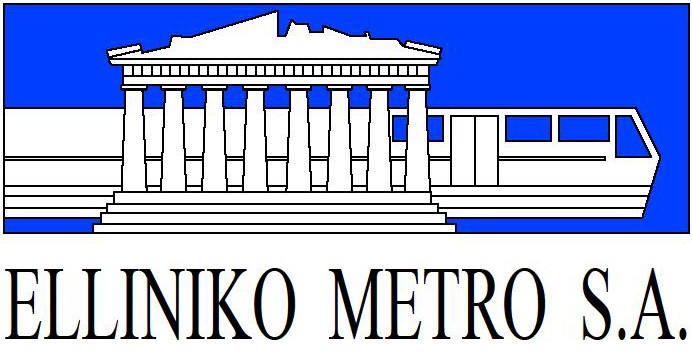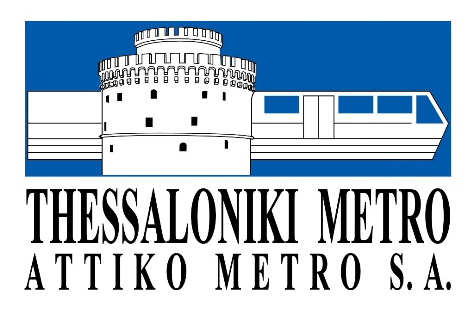According to the time schedule announced by Mr. George Souflias, Minister of PEHODE, as of today the THESSALONIKI METRO comes into the finishing stretch aiming at selecting the temporary lowest bidder of the project in the middle of August.
- “THESSMETRO” Consortium consisting of the companies: J & P-ΑΒΑΞ, F.C.C. CONSTRUCCION, CONSTRUCCIONES Y AUXILIAR DE FERROCARRILES, DIMETRONIC, ELECNOR, INSTALACIONES INABENSA.
- ΑEGΓΕΚ – IMPREGILO – ANSALDO T.S.F.- SELI- ANSALDOBREDA” Consortium.
- “ΑΚΤOR – SIEMENS -VINCI – THEMELIODOMI” Consortium.
- “BILFINGER BERGER- ATHINA – ΑΤΤΙ-ΚΑΤ- ROTEM COMPANY – ALCATEL CANADA – TPF CHAPEAUX INTERNATIONAL” Consortium.
The technical and financial offers shall be evaluated by the ATTIKO METRO S.A. Committee in charge and the temporary Contractor is expected to be selected mid July.
The Thessaloniki Metro, 9.6km long, with 13 modern Stations, constitutes one of the basic priorities of the Ministry of PEHODE since it is the most important transport project ever constructed in the city.
YPEHODE abides by its commitments and makes every possible effort to properly settle all complicated issues related to this Project. The Tender procedure is now in the completion phase with all national and community rules being adhered to. It is worth mentioning that the time needed for the completion of the tender procedure was short in relation to the international experience in Tenders related to the award of such major projects.
BASIC DESIGN PRINCIPLES
ATTIKO METRO S.A., having acquired a 13-year of valuable experience from the construction of the ATHENS METRO and by means of the new suitable specifications, ensured that the THESSALONIKI METRO would be a contemporary, modern, state-of-the-art transportation system even better than the respective Metro System in Athens, in terms of technology.
Based on the new preliminary design of the project, significant problems of older designs, that would certainly result in cost and time overruns during its construction phase were minimized.
Moreover, a decision was made for the Stations to be constructed using the Cut and Cover Method, in view of minimizing the disturbance caused to the pedestrians and to the circulation of the vehicles in the main roads of the city of Thessaloniki.
Based on this construction method, the major part of the construction works will be executed below surface and the unavoidable disturbance due to works executed at the surface level will be significantly less than the disturbance that would have been caused if the C/C method had been selected – as the case had been in most of the Stations of the ATHENS METRO System.
ATTIKO METRO S.A. experience and the perfect co-operation with all agencies involved resulted in the resolution of major technical issues. It is worth highlighting that the issues pertaining to the archeological excavations and the exposure of the cultural heritage of Thessaloniki in the network’s Stations were resolved in the best possible way.
THREE MAJOR IMPROVEMENTS OF THE PROJECT DESIGN
Significant issues that had not been dealt with efficiency by the previous design in the framework of the failed attempt to construct THESSALONIKI METRO based on the concession contract method (1998-2003) – are now dealt with in detail thanks to the new design of the project. ATTIKO METRO S.A. succeeded in coping with particularly difficult challenges in technical issues regarding the construction of the project, securing thus the minimization of nay entanglements due to the inefficient initial planning. More specifically, the basic improvements in the design of the Thessaloniki Metro Project are the following:
ARCHAEOLOGICAL ISSUES
Thanks to the perfect and close cooperation with the Archaeological Departments and the Ministry of Culture, ATTIKO METRO S.A. proceeded with the following actions:
- It prepared an archaeological documentation design, determining the stations that could be characterized as “high archaeological risk” ones, since encountering antiquities during the execution of excavation works is very likely.
- It proceeded with the relocation of those Stations whose construction would require long-lasting archaeological excavation (e.g. PL. DIMOKRATIAS Station was shifted to a new location outside the ancient walls of the city).
- The best possible methods were selected in view of securing the archaeological finds, as well as minimizing both cost and time of the archaeological excavations.
PUBLIC UTILITY ORGANIZATION NETWORKS
The improvements in the alignment of THESSALONIKI METRO Line were effected in such a way so as to secure that there would not be any entanglement with the Main Sewer of the city, a major part of whose –based on the initial design- should be relocated and diverted. Similar provisions and minor corrections were effected taking into consideration the remaining PUO networks in the city of Thessaloniki.
SUBSOIL
The new preliminary design of the project, thanks to the collection of additional data relating to Thessaloniki subsoil, determined exactly the excavation methods of the Stations and the Line and identified the characteristics of the two Tunnel Boring Machines.
TECHNICAL CHARACTERISTICS OF THE NETWORK
The basic characteristics of the THESSALONIKI METRO network are the following:
- 13 modern center platform stations.
- 9.6 km of Line (with two independent single track tunnels), constructed mostly (7.7 km) by means of two Tunnel boring Machines. The remaining section of the Line will be constructed by the C/C method.
- 18 ultra-automatic and state-of-the-art trains, fully air-conditioned, which will be run without a train driver, with an attendant aboard.
- A depot in the Pylea Region (Votsi) covering a surface of 50,000 square meters.
- The most important differences of the Thessaloniki Metro, which are improvements in relation to Line Nos 2 and 3 of the Athens Metro, consist in the fact that there will be two independent single track tunnels (instead of the double track at the Athens Metro), as well as a door system at the Stations platforms for the optimum convenience and a higher safety level for the Metro passengers.
- The archaeological excavation is provided for to cover a surface of 19.200 square meters and ATTIKO METRO S.A. in cooperation with the Ministry of Culture will exhibit the most significant archaeological finds at central Stations of the network.
STRICTLY WITHIN THE TIME SCHEDULE SET BY THE MINISTRY OF PEHODE
The implementation of this major project falls strictly within the time schedule set by the Ministry of PEHODE and the project will proceed as scheduled by the Government.
Based on the Invitation to Tender, in June 2004 five consortia expressed their interest.
The first phase (pre selection) of the Tender was completed in November 2004, when four out of five joint ventures participated in stage B’ and in January 2005 they took delivery of the tendering documents and the new preliminary design of the project.
On May 12th 2005 the pre-qualified joint ventures submitted their technical and financial offer and the selection of the Contractor is expected to take place in summer 2005, on condition that there will be no entanglements due to objections.
Subsequently, the relevant contract with the Joint Venture will be signed and it is estimated that works will last 6.5 years.
THE DESIGN OF THE FUTURE EXTENSIONS HAVE COMMENCED
At the same time, the design work for the extension of the Project to Kalamaria and Stavroupoli (9,5 additional km of the Metro Line with 10 new Stations), has been launched in order to create a comprehensive Metro network to serve most of the regions of Thessaloniki.
ATTIKO METRO S.A., in co-operation with YPEHODE, ensures that the THESSALONIKI METRO will embellish the city of Thessaloniki and improve significantly the every day life of the citizens.



